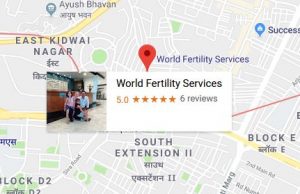IVF is an acronym for In Vitro Fertilization (‘in vitro’ means ‘OUTSIDE THE BODY). IVF is the adding a of man’s sperm to his female partner’s eggs in the laboratory to produce embryos.
The natural process: Sperm from a man and an egg from the woman are placed in the woman’s fallopian tubes. These fallopian tubes join the ovaries to the uterus (womb). There one sperm enters the egg and fertilizes it.
In IVF, the whole process takes place outside the body.
IVF Process:
IVF is a procedure spread over two to three weeks. The steps involved in the IVF procedure are:
• Stimulating the ovaries
• Collecting the eggs
• Fertilization
• Embryo transfer
Stimulating the ovaries
Hormonal therapy is prescribed to stimulate the ovaries to produce more than one egg per cycle in IVF treatment. This enables multiple egg collection in one cycle. These are then monitored by serial ultrasound and blood tests. Once the blood test and ultrasound ensures adequate maturity of the follicle, the eggs are collected.
Collecting the eggs
The eggs are usually collected by ultrasound guidance under sedation or short anesthesia. This involves a needle being inserted into the scanning probe and into each ovary. The eggs are then collected through the needle.
Fertilization
After the egg collection, a couple of hours later the male partner’s sperm is collected. They are then mixed together under the microscope as per IVF standard in a culture dish. They are then checked after 16-20 hours to see if any have fertilized.
Those that have developed into an embryo are then kept in the incubator for further development. The best embryo is then chosen for transfer.
Embryo transfer
Once the embryos have developed, they are transferred back to the woman’s uterus after taking into consideration her menstrual cycle. The embryo transfer is painless and usually does not need anesthesia. Two weeks later, a blood test is conducted to confirm whether the woman is pregnant or not.
Risks involved:
There is no risk involved in IVF treatment except that the patient might go through some breast tenderness, slight nausea, dizziness and slight abdominal heaviness occasionally.
The reasons IVF is done include – poor sperm quality and/or quantity, obstructions of fallopian tubes, ovulation problems, sperm-egg interaction problems and patients with genetic diseases. These problems can prevent couples from having a baby naturally and IVF helps solve this.
Source : http://goo.gl/IOPCaG



 WhatsApp us
WhatsApp us